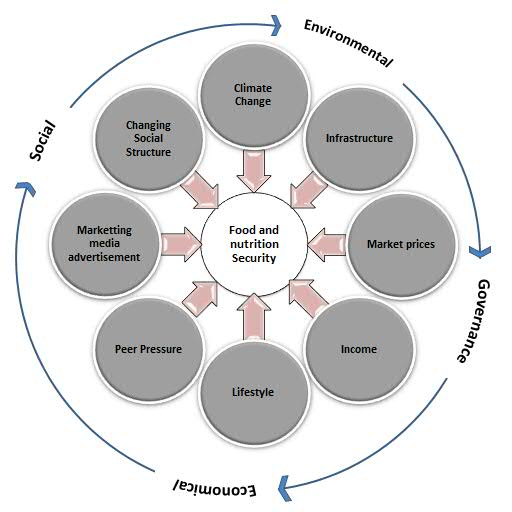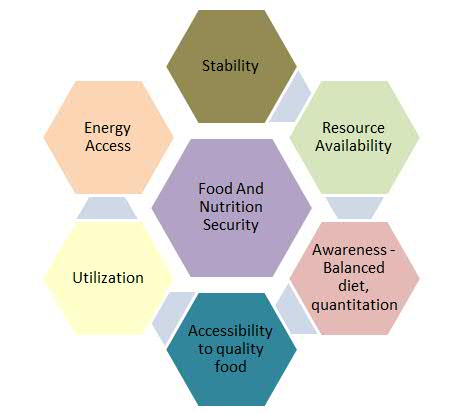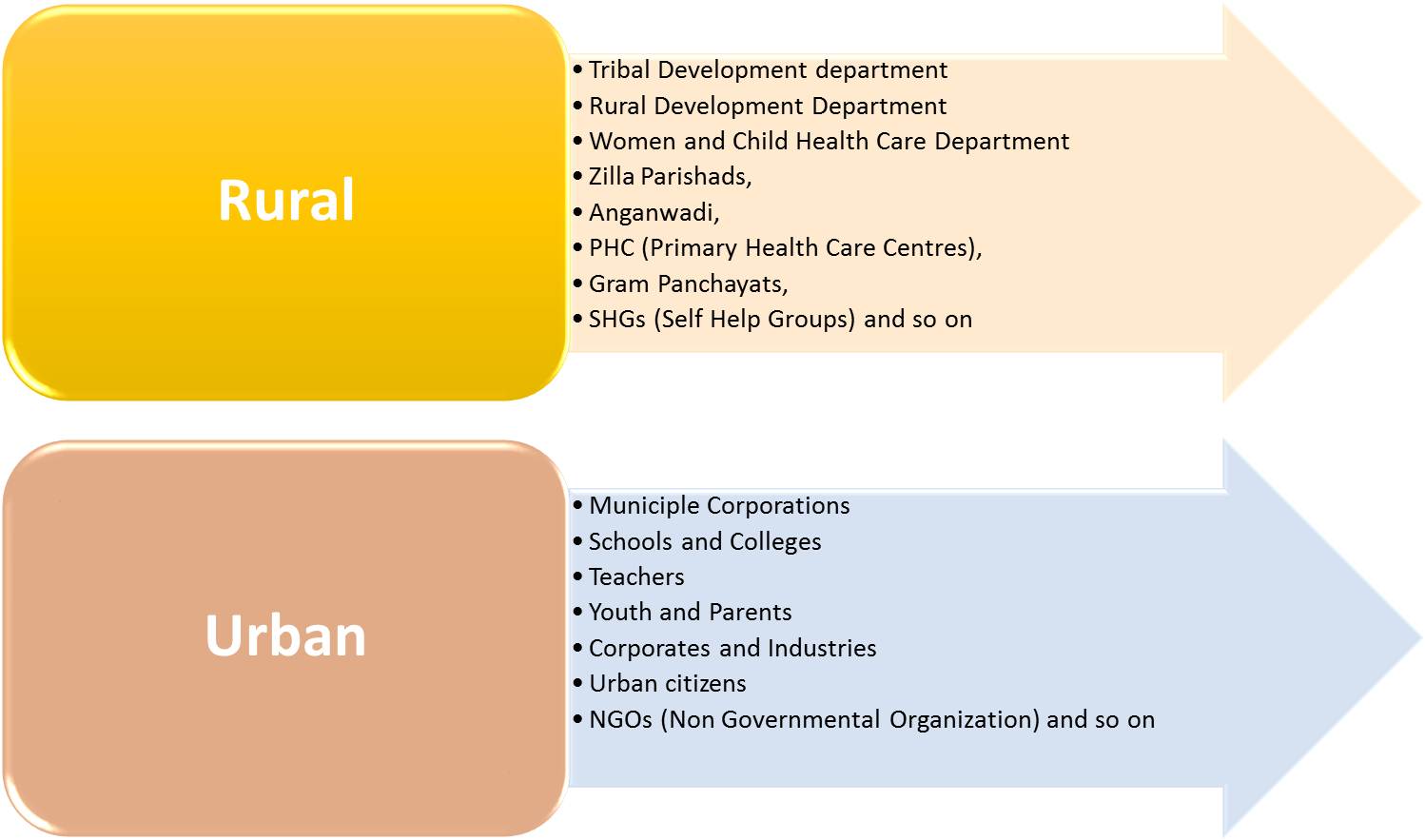Food and Nutrition Security
Factors Influencing Food and Nutrition Security
- Availability: This addresses the supply side of the food and nutrition security and ensures sufficient quantities of quality food available to people.
- Awareness: In terms of importance of balanced diet that also includes quantitation of calorie and nutrient intake. It also includes information about proper food preparation and hygiene practices, eating habits, and meal frequency.
- Accessibility: This encompasses the secured access to appropriately nutritious diet, including essential nutrients, water, sanitary conditions and health services. It includes the socio-economic capacity of individuals to acquire quantity of quality food.
- Utilization: This refers to the utilization of various nutrients in the food by human body which is ensued by nutritious and safe food prepared properly in clean environment and a proper health care.
- Energy access: It ensures availability of adequate and clean energy to cook the food. Energy inaccessibility influences the quantity and the quality of the foods consumed and their ability to be digested.
- Stability: This strives to secure the other components of food and nutrition security over time even at the time of stresses.


Challenges to Food and Nutrition Security
There are various social, economic, environmental and governance factors that pose challenge in the way to achieve food and nutrition security.
Climate change is one of the biggest global threats. Temperature and precipitation variations, increased frequency of extreme events, and rising sea levels impacts the availability and accessibility to resources required to meet the food and nutrition demands of the rising population. Decreasing yields, crop loss, crop failure leads to loss of income of the farmers. Increased market prices decrease the purchasing power of both urban and rural community therefore affecting their diets. Various government policies have a huge impact on people’s food intake, for example the Public Distribution System scheme that ensures availability of cereals like wheat and rice to the people, and however it doesn’t provide other sources of nutrients like pulses. Decreasing land under agriculture for development leads to reducing land under food crops affecting the availability of nutritious crops in the market, thereby, increasing market prices that decreases the purchasing power of individuals. Similarly, lack of adequate infrastructure like storage structures, post-harvest warehouses, cold storage and transportation leads to the loss of grains and vegetables every year.
Another major reason that leads to malnourishment in urban children is inclination towards processed food. Infusion of fast foods, aerated drinks and so on has increased the incidence of obesity in these children. Marketing, packaging and advertisements of such products and peer pressures also adds to this challenge where the dependence on ready-to-eat is causing more harm than ease. The affordability of certain section of society and changing social norms and decreasing cohesiveness and increasing individualism affects the food habits among people which in many ways very different from that of our previous generations.
Stakeholders

